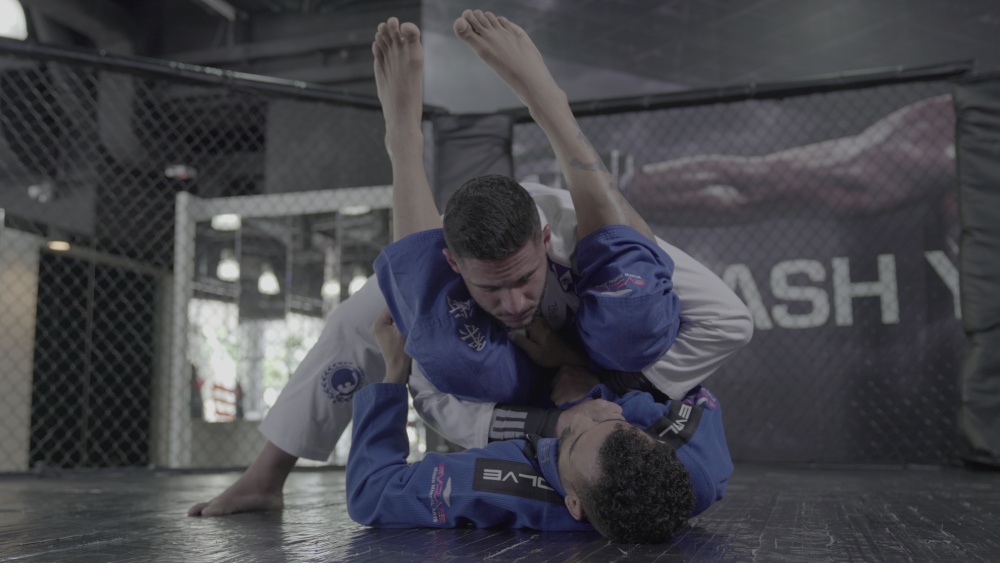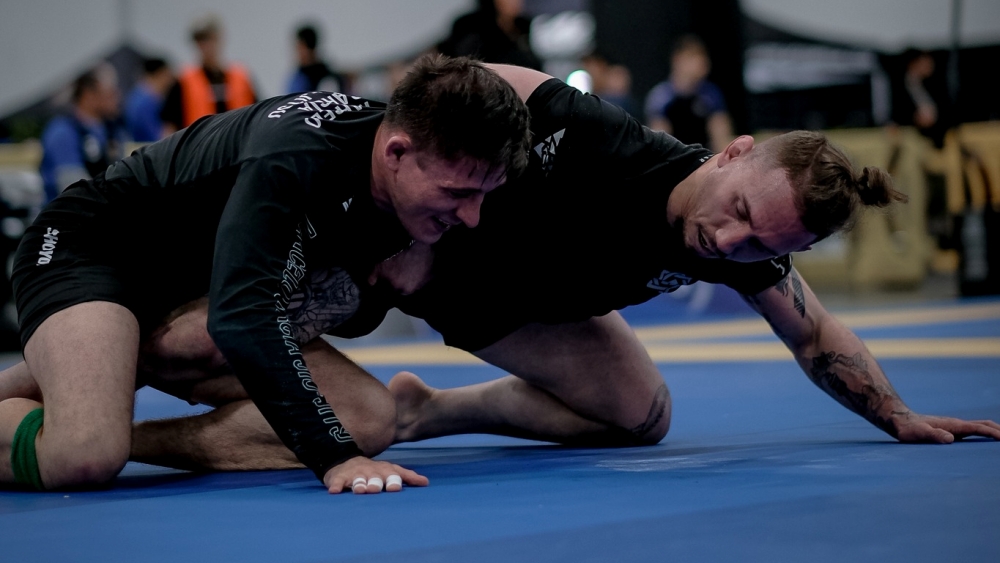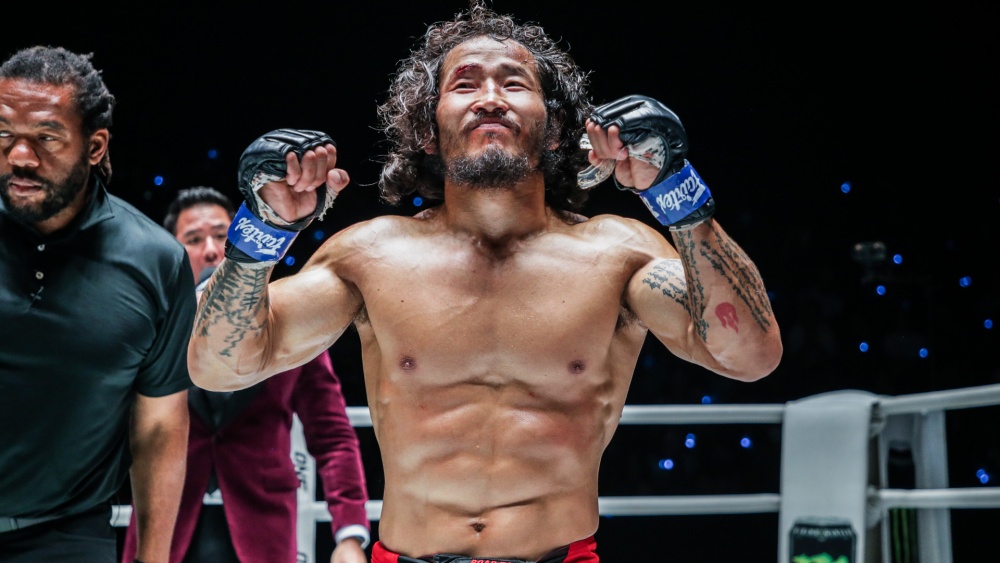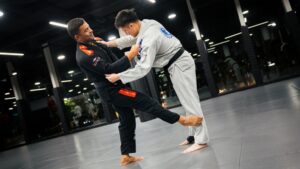Passing the guard is one of the key skills one should learn when training in Brazilian Jiu-Jitsu. Being able to get around an opponent’s guard is an essential aspect of grappling, as the guard (using the legs as a barrier of defense) severely limits offensive options on the side of the one that’s on top.
As the sport evolves, many techniques have come and gone, but there’s this small group of moves that are so effective they have become part of BJJ’s primary curriculum. Today, we’ll talk about one of these techniques, the classic double under guard pass.
What Is The Double Under Pass?
The double under pass is a variant of the stack pass, where you literally stack the opponent’s legs overhead to pass the guard. This is one of the most fundamental techniques you’ll learn in your BJJ training, as it is a simple and practical way to bypass the legs. It is generally taught to beginners as it is a relatively straightforward move and does not require unique attributes to pull off.
The double under pass is one of the many styles of pressure passing you can do. You can use the double under as your primary passing option, you can also use it as part of a rotation of guard passing techniques. Learning other passing techniques forces your opponent to stay defensive, thereby limiting their time to initiate attacks.
Benefits Of The Double Under Pass
The main benefit of the double under pass is its simplicity. It is one of the most basic guard passing techniques in all of BJJ and is most likely one of the first ones a beginner will learn. The double under pass is such a tremendous passing technique because you force your opponent to weaken their defenses by forcing their legs upwards and over the body. Doing so gives you access to pass the guard underneath their legs.
One of the most important concepts in passing the guard is to force the opponent to expose their torso so that you can move past the leg. Lifting the legs up and over does exactly this – it takes away the leg’s ability to block the torso, giving you the ability to pass. If you like to play a more crushing style of BJJ, this is definitely a technique you should consider.
Another benefit of the double under pass is that it can be used as a hub for your pressure passing game. You can always start with the double under and move to other forms of pressure passing like the over under, single stack, staple, and body lock. They work very well together and will definitely make you a better guard passer.
How To Do The Double Under Pass
BJJ black belt Rodrigo Freitas demonstrates the basic double under pass. The pass starts by first establishing the double under grip as you pull them over your legs. Next, grab the collar with one hand and hold the pants near the hip with the other. Sprawl and place your weight on the opponent’s legs as you take an angle. Assuming that you grabbed the collar using your left hand, angle your body towards the left as well. Maintain pressure as your head slowly passes the legs and pass. Once you pass the guard, immediately go to side control to get your points.
Notice that the technique has only a few steps and is not very difficult to execute. This is why the double under pass has been relevant for decades and is still widely used today – it is easy enough to execute that practitioners of all levels can learn it in a day. It is also very effective (especially in the heavier weight classes), so there’s no reason it shouldn’t be used if you think about it.
Troubleshooting The Double Under Pass
In this video, John Danaher black belt Brian Glick shares a couple of essential concepts to make your double under pass world-class.
The first item on the list is your starting position. Stop getting caught with one arm in and one arm out. This might sound very elementary as this opens us up for the triangle choke, but in the heat of rolling, even the most experienced grappler in the gym can leave one arm in and one arm out. Be mindful of your position before you start with your attacks. Get the inside position first on both sides and then pass.
The next one addresses the heavy leg defense, where the opponent’s legs are either too low or just plain heavy. What you need to do here is to ensure that the opponent’s leg is positioned near your shoulder and not your elbow. You can fix this by lifting one leg at a time until it reaches shoulder height. Alternatively, you go down near the hip and adjust as you go back up.
The last tip discusses strategies if the opponent scoots backward as you go for the double under pass. There are two things you can do from here: you can follow the opponent as they scoot back, or you can switch to another guard pass where you can pin the opponent’s leg using your knee. Both are sound options, but the latter approach is preferred as you don’t have to use too much energy to maintain the position.
Conclusion

In conclusion, the double under pass is a fantastic technique that all Jiu-Jitsu students should learn. Regardless of your size, strength, and experience, we highly encourage you to include this in your passing game.
Remember that the devil is always in the details. Don’t underestimate the double under pass just because it may seem like a “simple” move. This is a technique that even championship-level black belts use. Learn to use intermediary techniques and always attack in combination as much as possible. The more you chain your attacks, the better the chances of them being successful. Try the double under pass the next time you train, and let us know if it works for you.
You may also like:
















